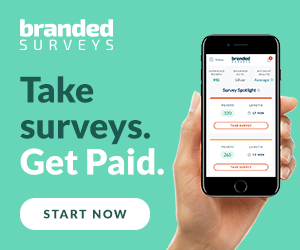As the holiday season approaches, shopping online becomes more accessible, prevalent, and necessary. Deals start flying at you from email lists, online flyers, and shop windows, and it’s almost impossible to avoid hitting that “add to cart” button on Amazon. But with online shopping, it can be difficult to avoid making mistakes that can cost you some serious coin or even an attack on your credit.
While shopping online is highly convenient and helpful, it can also be deceptive and tricky. In this article, we’ll be discussing how online shopping can be dangerous, as well as the mistakes you must avoid when shopping online, especially during the holidays.
Online Shopping Can Be Dangerous
Online shopping can be dangerous for many different reasons. While the internet has proven to be an incredible resource over the last couple of decades, it has also allowed scammers and cybercriminals to come out of the woodwork. Websites are constantly trying to buy and sell your data, and fraudulent websites or those without proper encryption can cause your data to fall into the wrong hands, leaving you the victim of identity theft and disrupting your entire life.
Because of this, you must be careful when handing over your data online, specifically things like your name, credit card numbers, address, driver’s license, and other personal information. You want to be sure to protect yourself from identity theft.
What Can Be Lost Through Reckless Online Shopping?
If you shop online recklessly or without paying attention to some online “red flags,” you could stand to lose a lot. For example, if you enter your credit card information into an untrustworthy site, it could be corrupted or sold off to a third party that could steal your credit card information. From there, hackers may be able to make purchases on your behalf without you even noticing.
Additionally, you certainly wouldn’t want your address floating around on a sketchy site, having the potential to be sold to a third party. On a less serious level, entering your email into untrustworthy sites can leave you with years of annoying spam emails if your information gets sold.
Online Shopping Mistakes
We’ve discussed the dangers of online shopping and what can be lost through corrupted information from online retailers. Now it’s time to talk about the mistakes you can make when doing your online shopping. These mistakes can be detrimental to your credit score and compromise your personal information, so paying close attention is vital.
Additionally, all these mistakes are easily avoidable once you become aware of them. Reading and following the tips below can be a great first step to avoiding missteps during online shopping.
Online Shopping Mistake #1: Trusting Sketchy Retailers
Trusting sketchy or suspicious online retailers might be the most dangerous thing to do during online shopping, but it is also very easily avoided. Sketchy retailers are websites that aren’t encrypted, aren’t trustworthy, won’t protect your personal information, or may not even send you the goods you’ve purchased. These are obviously crappy businesses to give your money to, as they may be fraudulent.
To avoid sketchy websites, check their reviews and trust your gut. Look at authority sites like Trustpilot to see how other, real people have reviewed the business to be sure it’s legitimate. Also, if a website looks or feels fishy, it probably is. Trust your intuition!
Online Shopping Mistake #2: Clicking Unknown Links
Spam emails are prevalent in this day and age, but sometimes they are tough to spot. Spam emails could look like they’re from your coworkers, professors, trusted websites, favorite brands, or even your family members. However, they can contain unknown links that lead you to input your personal information into a highly insecure source. When you do this, hackers can obtain your information, use your credit cards, or even install malware onto your computer and corrupt it.
To be safe, you should never click unknown links, whether they come from your email or on a website you see online. If you don’t know exactly where the link will lead, don’t click it!
Online Shopping Mistake #3: Not Checking A Site’s Security
You can do many little checks to ensure a site is secure. For starters, look at the URL. If it starts with HTTPS instead of HTTP, that additional “S” denotes another layer of site security.
Additionally, when you look at the URL, check for a small padlock icon next to the website address. This padlock ensures security and allows you to click on it and review the website’s security details and what kind of encryption they use to protect the data you enter. Many scammers and hackers will try to trick you by using names, URLs, and website addresses that are very similar to the ones you use all the time, so be sure to look carefully at each website address when shopping online.
Online Shopping Mistake #4: Not Using Secure Payment Apps
Secure payment sites like Shop Pay or PayPal can absolutely save you when it comes to data breaches or other issues with website security. Secure payment sites like PayPal have been used for years, and not only do they have the highest level of security when protecting your cards, but they also make checking out easier.
By entering and storing your card details in PayPal, you never have to enter them into the site you are purchasing from, which makes you more protected if that site were to have a data breach.
Online Shopping Mistake #5: Using a Public Wifi Network
Public Wifi networks are great for surfing the web or using social media in a cafe or mall. However, they are not great when you want to use your personal data or card info at an online retailer.
Public Wifi networks are typically not secure, meaning they are much easier for hackers to break into and gain access to any personal information you input into a retailer’s site. So try to do all your online shopping at home or a friend’s house, if possible.
Online Shopping Mistake #6: Not Using a Credit Card
Using a credit card to make your online purchases essentially makes every online transaction you make a bit more secure. If you charge your online purchase to your credit card, you can dispute the purchase and get your money back if the item doesn’t arrive as described or it doesn’t arrive at all.
This is much more difficult to do if you use a debit card, as the money needs to be refunded to your account. With a credit card, the purchase can simply be canceled.
How to Shop Online Safely and Confidently
Hopefully, the tips above have helped inform you how you can shop safely online without risking the privacy of your personal information. By avoiding the mistakes we outlined above, you should be able to save yourself from hackers and other untrustworthy users attempting to steal your data. No matter where you do your online shopping, be safe, use common sense, and trust your gut!











